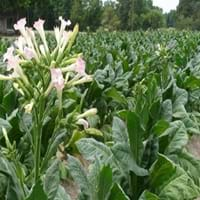Life Span
Perennial
Annual and Perennial
Type
Fruit
Tender Perennial
Origin
Eastern Asia
Central America, South America
Types
Actinidia arguta, Actinidia giraldii, Actinidia hypoleuca
Not Available
Number of Varieties
Not Available
Habitat
Dappled Shade, open Woodlands
Cultivated Beds
USDA Hardiness Zone
3-8
10-11
AHS Heat Zone
8-1
Not Available
Sunset Zone
1a, 1b, 2a, 2b, 3a, 3b, 4, 5, 6, 7, 8, 9, 14, 15, 16, 17, 18, 19, 20
H1, H2, 8, 9, 18, 19, 20, 21, 22, 23, 24
Habit
Vining/Climbing
Upright/Erect
Flower Color
White, Ivory
Light Pink
Flower Color Modifier
Bicolor
Bicolor
Fruit Color
Green, Yellow green
Brown, Sandy Brown
Leaf Color in Spring
Green, Dark Green
Green
Leaf Color in Summer
Dark Green
Green, Dark Green
Leaf Color in Fall
Dark Green
Green, Dark Green
Leaf Color in Winter
Light Green
Light Green
Leaf Shape
Oval
Oblong elliptic
Plant Season
Spring, Summer, Fall
Spring, Summer, Fall
Sunlight
Full Sun, Partial Sun
Full Sun, Partial Sun
Type of Soil
Loam
Loam, Sand
The pH of Soil
Neutral
Acidic, Neutral
Soil Drainage
Well drained
Well drained
Bloom Time
Spring, Late Spring, Early Summer
Early Summer, Summer
Tolerances
Shade areas
Drought
Where to Plant?
Ground, Pot
Ground
How to Plant?
Grafting, Stem Cutting
Seedlings
Plant Maintenance
Low
Medium
Watering Requirements
Average Water Needs, Requires regular watering
Average Water Needs, Do Not over Water
In Summer
Regular watering required
Lots of watering
In Spring
Moderate
Moderate
In Winter
Average Water
Average Water
Soil pH
Neutral
Acidic, Neutral
Soil Type
Loam
Loam, Sand
Soil Drainage Capacity
Well drained
Well drained
Sun Exposure
Full Sun, Partial Sun
Full Sun, Partial Sun
Pruning
Remove damaged leaves, Remove dead branches, Remove dead leaves
Remove damaged leaves, Remove dead branches, Remove dead leaves
Fertilizers
Apply 10-10-10 amount, fertilize twice a year
Equal amount of N,P,K
Pests and Diseases
Botrytis head rot, Japanese Beetles, Leaf Rollers, Nematodes, Phytophthora, Root rot, Sclerotinia blight, Spider mites, Thripes
Aphids, Black Shank, Brown Spots, Collar Rot
Plant Tolerance
Shade areas
Drought
Flower Petal Number
Single
Single
Fragrant Bark/Stem
No
Yes
Foliage Texture
Medium
Coarse
Foliage Sheen
Glossy
Matte
Allergy
Not Available
Dermatitis
Aesthetic Uses
Cottage Garden
Showy Purposes
Beauty Benefits
Not Available
Not Available
Environmental Uses
Shadow Tree
Air purification
Medicinal Uses
Antioxidants, Fiber, Folate, Rich in Potassium, Vitamin C
Antispasmodic, Diuretic, Emetic, Expectorant, Homeopathy, Sedative
Part of Plant Used
Fruits
Leaves, Seeds
Other Uses
Grown for shade
Used as an insecticide, Used as insect repellent, Used to make cigarettes and cigars
Used As Indoor Plant
No
No
Used As Outdoor Plant
Yes
Yes
Garden Design
Edible, Feature Plant, Vine
Mixed Border
Botanical Name
ACTINIDIA arguta
NICOTIANA tabacum
Common Name
Hardy Kiwi
Smoking Tobacco
In Hindi
हार्डी कीवी
Smoking Tobacco
In German
Hardy Kiwi
Rauchtabak
In French
kiwai
Tabac fumeurs
In Spanish
kiwi hardy
fumar tabaco
In Greek
σκληραγωγημένα ακτινίδια
Καπνός για κάπνισμα
In Portuguese
kiwi Hardy
O fumo de tabaco
In Polish
hardy kiwi
Palenie tytoniu
In Latin
Hardy kiwi
Quisque Tobacco
Phylum
Magnoliophyta
Magnoliophyta
Class
Magnoliopsida
Magnoliopsida
Family
Actinidiaceae
Solanaceae
Genus
Actinidia
Nicotiana
Clade
Angiosperms, Asterids, Eudicots
Asterids, Eudicots
Tribe
Not Available
Nicotianeae
Subfamily
Actinidiaceae
Nicotianoideae
Number of Species
Not Available
Not Available
Properties of Hardy Kiwi and Smoking Tobacco
Wondering what are the properties of Hardy Kiwi and Smoking Tobacco? We provide you with everything About Hardy Kiwi and Smoking Tobacco. Hardy Kiwi doesn't have thorns and Smoking Tobacco doesn't have thorns. Also Hardy Kiwi does not have fragrant flowers. Hardy Kiwi has allergic reactions like Not Available and Smoking Tobacco has allergic reactions like Not Available. Compare all the properties and characteristics of these two plants. Find out which of these plant can be used as indoor plant. If you are interested to decorate your house and garden, find out aesthetic uses, compare them and select the plant which will beautify your surrounding. Along with beautification, try comparing medicinal and edible uses of Hardy Kiwi and Smoking Tobacco and you can choose the plant having best and most benefits.
Season and Care of Hardy Kiwi and Smoking Tobacco
Season and care of Hardy Kiwi and Smoking Tobacco is important to know. While considering everything about Hardy Kiwi and Smoking Tobacco Care, growing season is an essential factor. Hardy Kiwi season is Spring, Summer and Fall and Smoking Tobacco season is Spring, Summer and Fall. The type of soil for Hardy Kiwi is Loam and for Smoking Tobacco is Loam, Sand while the PH of soil for Hardy Kiwi is Neutral and for Smoking Tobacco is Acidic, Neutral.
Hardy Kiwi and Smoking Tobacco Physical Information
Hardy Kiwi and Smoking Tobacco physical information is very important for comparison. Hardy Kiwi height is 550.00 cm and width 90.00 cm whereas Smoking Tobacco height is 120.00 cm and width 40.60 cm. The color specification of Hardy Kiwi and Smoking Tobacco are as follows:
Hardy Kiwi flower color: White and Ivory
Hardy Kiwi leaf color: Green and Dark Green
Smoking Tobacco flower color: Light Pink
- Smoking Tobacco leaf color: Green
Care of Hardy Kiwi and Smoking Tobacco
Care of Hardy Kiwi and Smoking Tobacco include pruning, fertilizers, watering etc. Hardy Kiwi pruning is done Remove damaged leaves, Remove dead branches and Remove dead leaves and Smoking Tobacco pruning is done Remove damaged leaves, Remove dead branches and Remove dead leaves. In summer Hardy Kiwi needs Regular watering required and in winter, it needs Average Water. Whereas, in summer Smoking Tobacco needs Lots of watering and in winter, it needs Average Water.





